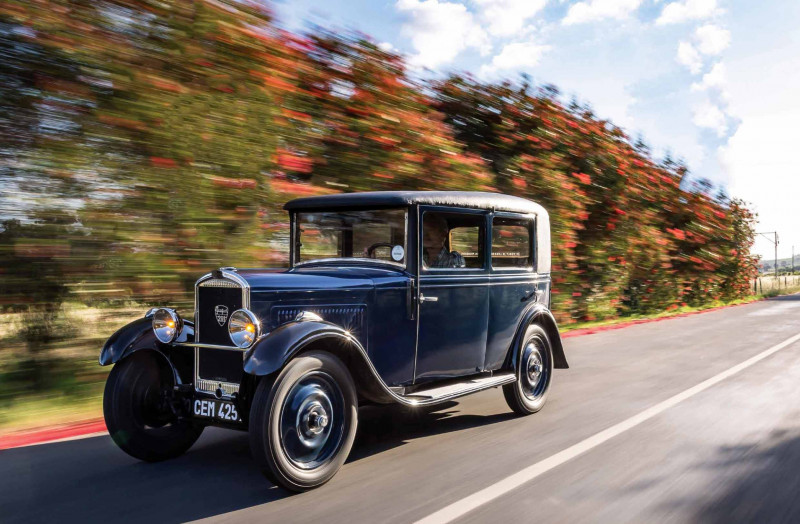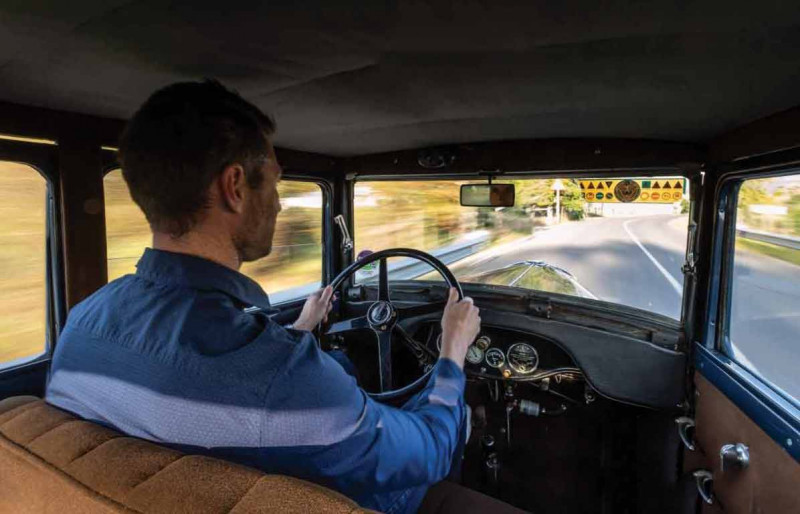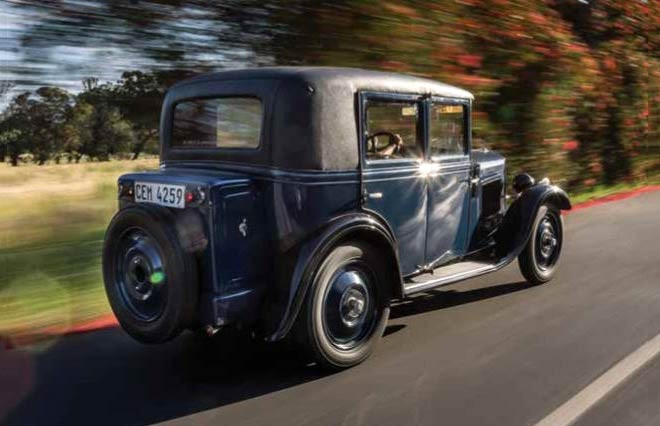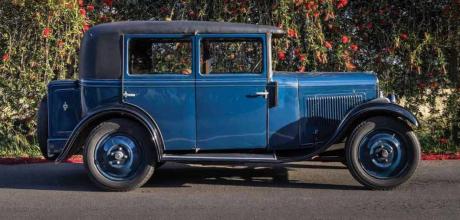1930 Peugeot 201 Saloon
We are used to Peugeot using 0 in its model range but where did the story begin? As part of our 65-year celebration of CAR, we drive the first of these models, the 201 Saloon.
THE BEGINNING OF 0
If you page through the owner’s manual of a pre-war vehicle, it makes for interesting reading. Each generation is convinced it is cleverer than the one that came before.

However, these exquisite manuals – divulging the finer details of valve and timing adjustments with intricate diagrams and sketches – would suggest otherwise. Today, a manual may actually warn against drinking the cooling fluid, for goodness’ sake. This 1930 Peugeot 201 instruction book sheds some light on the heavy maintenance schedule required by these early cars. Every week or 750 km, the dynamo balancers had to be lubricated and oiled. Where fitted to the battery ignition distributor, the automatic oiler had to be replenished with a special, thick oil for the gears: Mobiloil C in summer and Mobiloil CW for the winter. The starter also had to be lubricated by means of the oilers. The fan belt had to be regularly checked, and there is a clear, concise description of how to do this.

Motoring in the first half of the 20th century clearly took some mechanical knowhow and planning! As the owner of this 1930 Peugeot 201 explained, these cars were the first to carry the 0 by Peugeot. Along with Mercedes, Peugeot was one of the early manufacturers to develop a petrol-type car as far back as 1886. However, the 201 should be acknowledged as the company’s first car produced on a large scale. The car was shown at the 1929 Paris Motor Show, the same year as the Wall Street Stock Market crash.

However, Peugeot survived these difficult years by offering the inexpensive 201 Saloon. These came with a variety of bodies, as with nearly all manufacturers of this era. The chassis was invariably standard with a different coach-built body fitted to it. There was a two-seater Cabriolet, a commercial vehicle, and two versions with four seats: a Tourer station wagon and the Saloon. This 201 is an example of the latter.

As with most cars from the pre-war era, it is the simplicity as well as the finer details that make it stand out. The roof is covered in vinyl, the windows are dead straight and upright, with not a curve in sight. The twotone paint scheme lends some class to the design, while the louvres on the engine cover are not just for show, they are a necessary addition to allow hot air to escape. Even the wheels are painted the same colour as the body. The chassis plate bears the vehicle’s chassis number, details about the engine and the all-important lubrication information. At the rear, a spare wheel is attached to the exterior, with a luggage box in front of this. The owner has stored the 201’s toolbox here. The pop-up indicators situated below the Apillar also reveal the car’s age. Interestingly, the front doors open rearwards to climb in, while the rear doors open normally; all four items hinged to the B-pillar.
On the inside, the cabin is tight, particularly up front. The rear has more space, even for taller adults, and sports armrests. The dials in the centre of the cabin to the right of the steering wheel provide information such as the speed, oil pressure, fuel level and an amp meter for the battery. Two of these instruments are made by Jaeger. As is often the case with older cars, a modern, aftermarket coolant temperature indicator helps the driver keep an eye on the temperature of the engine. Several trimmings are made of real wood, adding to the cabin’s authentic pre-war feel.
There is a large, four-spoke steering wheel and the windscreen can open completely. Chromed sliders enable the window to open outwards, ideal for hot summer days, allowing air to blow into the cabin.
Unlike modern vehicles, the brake and throttle pedals are swapped around and take some getting used to. Thankfully, the throttle pedal is tiny and makes it a little easier. The gears also take a while to learn; first gear is right and down away from the driver, second is left and up, with third gear straight down from second.
The modest 1,1-litre engine takes time to accelerate, of course, but not as slow as I expected. I changed gears all the way into third and finally reached 60 km/h, which the car was able to maintain comfortably. Peugeot claims the top speed is 80 km/h. With a long stretch of road, this is possible … remember, there was a lot less traffic in the 1930s.
Fortunately, this car was in excellent condition when the owner and his brother bought it 11 years ago and required only a handful of small jobs. Currently, it needs a piece of wood trim in the cabin and a few other odds and ends, but for a 92-year-old vehicle, it is in remarkable condition.
It was part of a trio of vintage Peugeots imported by Peugeot SA in the 1970s: this model, a 1925 and a 1928 model. As well as being the only one of its kind in the country, it is one of the oldest Peugeots in South Africa. Today, the 201 can often be seen at Peugeot club outings and breakfast runs in and around the Winelands.
TECHNICAL DATA 1930 Peugeot 201 Saloon
- Engine: 1122 cm³, four-cylinder, petrol
- Transmission: 3-speed manual
- Max Power: 17kW @ 3500rpm
- Tyres: Dunlop 4,50–18
- Length: 3657 mm
- Top speed: 80 km/h
- Fuel tank: 29,6 litres
- Weight of chassis: 595kg
- Weight of car (with body): 890kg
- Turning diameter: 10,8 metres
- Manufactured: 1929-1937
- Number made: 142 309


